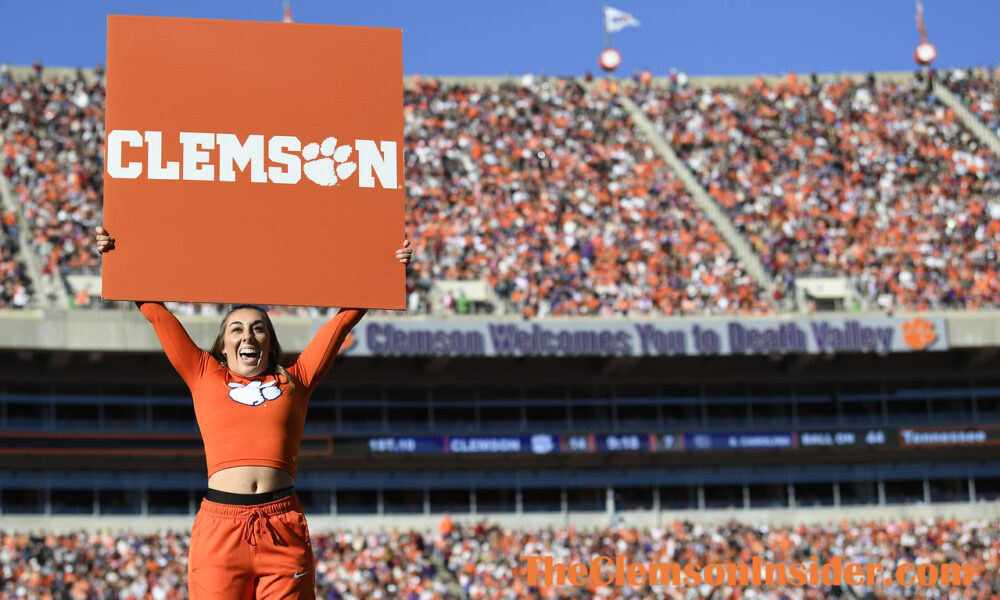I am not writing this today because of what Paul Finebaum recently said on his television show. None of that matters to me.
However, what I do care about are facts and getting the story straight. This is why Clemson, and the Atlantic Coast Conference, need to set the record straight on who is College Football’s Original Death Valley.
It is not about wins and losses and who thinks whose atmosphere is better or which stadium is louder. They are both great in all of those categories.
However, in order for something to be real or an imitation, facts have to be presented. Once those facts are proven, you have to stand on them and present them to the public with an accurate depiction.
Make sure their story is told the correct way and without any influence from LSU or the SEC.
The story of Memorial Stadium in Clemson and how it became known as “Death Valley” has been well documented and told thousands of times, including by this writer. It is one of the great stories that makes Clemson Football’s rich history so entertaining.
However, what is LSU’s story?
“While there’s no debate about the origins of the Death Valley title in Clemson, there is still some murkiness around its roots in Baton Rouge. It was still called “Deaf Valley” by most [LSU] fans throughout the 1970s and ’80s,” ESPN personality and author Ryan McGee wrote in an ESPN.com article titled, A heated LSU-Clemson debate: Who plays in the real Death Valley?
Even an LSU legend, who coached the Bayou Bengals to their first national championship in 1959, did not know when LSU started using the “Death Valley” moniker. Former LSU and South Carolina head coach Paul Dietzel coached the LSU Tigers from 1955-’61 and said the nickname “Death Valley” was not used to describe Tiger Stadium while he was the head coach in Baton Rouge.
“I don’t think so. That came a little later,” Dietzel said to me in a 2012 interview.
As McGee points out, no one can get their story straight in Baton Rouge, as their stories come off more as Urban Legend, if you will.
This is where Clemson and the ACC need to set the record straight.
Clemson, by changing is subtle signage from “Clemson Welcomes You To Death Valley” to a more direct “Clemson Welcomes You To College Football’s Original Death Valley,” will cause a stir. It will make the average college football fan, who hears all those SEC homers on ESPN proclaim LSU’s Tiger Stadium as College Football’s Death Valley, take notice and possibly change perceived notions.
This is something Clemson needs to do before it hosts LSU on Aug. 30.
Will it cost money?
Sure, but Clemson needs to make a statement and stop standing in the background and allowing the SEC and LSU to take it from them.
As for the ACC, it needs to pump up Clemson as the “Original Death Valley” all summer. It needs to put the Clemson story in its press releases when it talks about this game.
It needs to do the same on its television network, ACCN, and allow Mark Packer, Eric Mac Lain and Kelly Gramlich—all Clemson graduates—to defend their alma mater and go back after guys like Finebaum, Bugger McFarland and all the other SEC homers.
Let’s have an ACCN and SEC Network war of words leading up to the game. It would be good for hyping the game.
Put them all on ESPN’s College Football Live or SportsCenter, debating this topic and getting fans educated. Do not let ESPN just put SEC homers on its shows with other analysts who know nothing about the real stories behind the Death Valley monikers.
Let’s do this Clemson and the ACC, and for once stand up for yourself when it comes to this subject. If you do not, I can guarantee you, when the two teams meet in Baton Rouge next year, LSU and the SECN are going to do it.
To be honest, they probably are going to do it this year.
